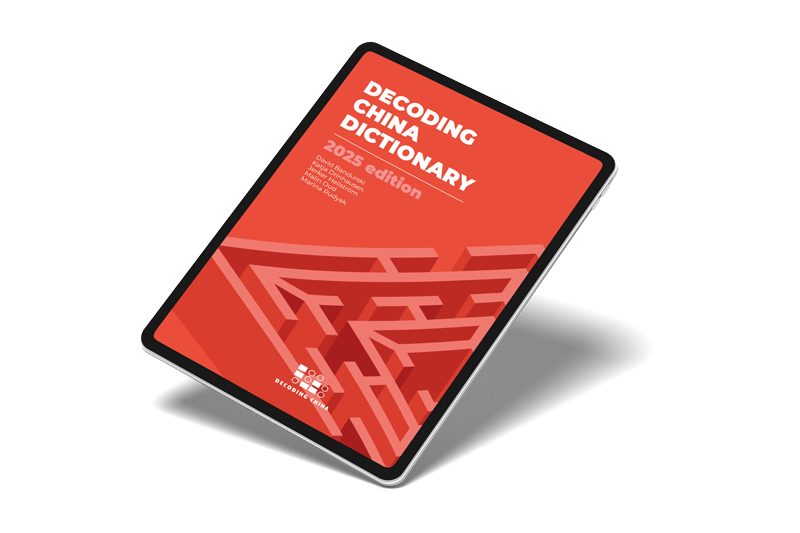
KEY TERM
Prosperity
[ 富裕 ]
[ 富裕 ]
Prosperity

Brief
In global discourse, prosperity has typically encompassed economic and social well-being, which in many contexts — both within nation states and international institutions — has been linked to social and political freedoms. The UN Charter speaks of promoting “social progress and better standards of life in larger freedom”.
In the modern era, prosperity has featured prominently within Chinese political traditions. Sun Yat-sen, often seen as the founder of modern China, in 1905 listed “people’s livelihood” as one of his three key political goals (along with nationalism and democracy). In subsequent decades, various iterations of prosperity were closely tied to national revival and political legitimacy — from Mao Zedong’s “common prosperity” (共同富裕) as radical egalitarianism promoting violent revolutionary struggle, to Deng Xiaoping’s reinterpretation to enable grassroots capitalism. In Xi Jinping’s China, “common prosperity” has assumed a new populist meaning, with an emphasis on performative acts and propaganda. Unlike global conceptions linking prosperity to individual liberty, China’s notion centres on prosperity as a good delivered by the Party.
Analysis
Before the Communist era, Sun Yat-sen’s Three Principles of the People (三民主义) established prosperity as central to Chinese political thought. The third of these principles, minsheng (民生主義), emphasised “people’s livelihood” through land reform, wealth redistribution, and state-managed economic development, dividing welfare into four essential areas: clothing, food, housing, and mobility. Influenced by American economic and social philosopher Henry George and combining traditional Chinese values with modern governance concepts, Sun’s doctrine sought cooperation between classes rather than Marxist struggle, advocating redistributing land ownership rights and state oversight of major industries as methods to achieve national prosperity without creating extreme wealth inequality.
The phrase “common prosperity” (共同富裕) first appeared in the People’s Daily on 25 September 1953. This Maoist conception linked prosperity to collective ownership and mutual aid within agricultural cooperatives. As political struggles subsided in the late 1970s, Deng Xiaoping led an ideological reversal. While capitalism had been condemned as “a road of a few getting rich”, Deng’s reform and opening policy rewrote “common prosperity” to embrace what Mao had forbidden — allowing select individuals and regions to accumulate wealth first. “Poverty is not socialism”, Deng wrote.
Deng’s capitalism as “socialism with Chinese characteristics” held GDP growth as a key marker through successive administrations. In 1997, Jiang Zemin introduced the “Two Centennial Goals”: by 2021, the CCP’s 100-year anniversary, to “enter moderate prosperity, and stride boldly toward prosperity and power”; and by 2049, the national centennial, to “build a modern socialist country that is prosperous, strong, democratic, culturally advanced and harmonious”. These became goal posts for “common prosperity”.
By the second half of the Hu Jintao era (2002-2012), it was clear that rapid development had brought sharp social and economic inequities. Considering “the intensification of social stratification and the increase in social problems”, as one official economic journal wrote in 2007, “there must be new ideas”.The rethink took form as Hu Jintao’s “Scientific View of Development”, which stressed balanced growth over pure economic expansion.
In the Xi era, common prosperity has been hobbled by contractions in China’s economic model, chief among them capitalist-style inequalities (“natural antagonism”) stemming from the fact that three quarters of urban workers are employed by private enterprises. While the promise of shared prosperity remains central to the CCP’s legitimacy, lagging economic growth has necessitated new approaches.
Xi Jinping’s response has been a mix of initiatives and performative gestures. In March 2021, Zhejiang province was designated as a “demonstration zone”, with proposed measures including the creation of “high-quality” jobs to promote common prosperity. Renewed talk of common prosperity at the top followed in August 2021, as Xi wrapped the concept with the geo-politicised “Chinese-style modernisation” — essentially, the assertion that modernisation as pursued by the CCP is fairer and more sustainable than that of the West.
The performative aspect became evident in August-September 2021, when major firms were pressured to donate billions to common prosperity funds. Similarly, China’s December 2020 declaration of victory in the “war against poverty” asserted victory even while Premier Li Keqiang acknowledged that 600 million Chinese still lived on less than 140 dollars per month.
How to cite the Decoding China Dictionary:
The Decoding China Project (eds.) The Decoding China Dictionary (2025 ed.), 2025. Berlin: The Decoding China Project. Available from: https://decodingchina.eu/.
Research related to this term was supported by:

Related Articles That Might
Interest You






